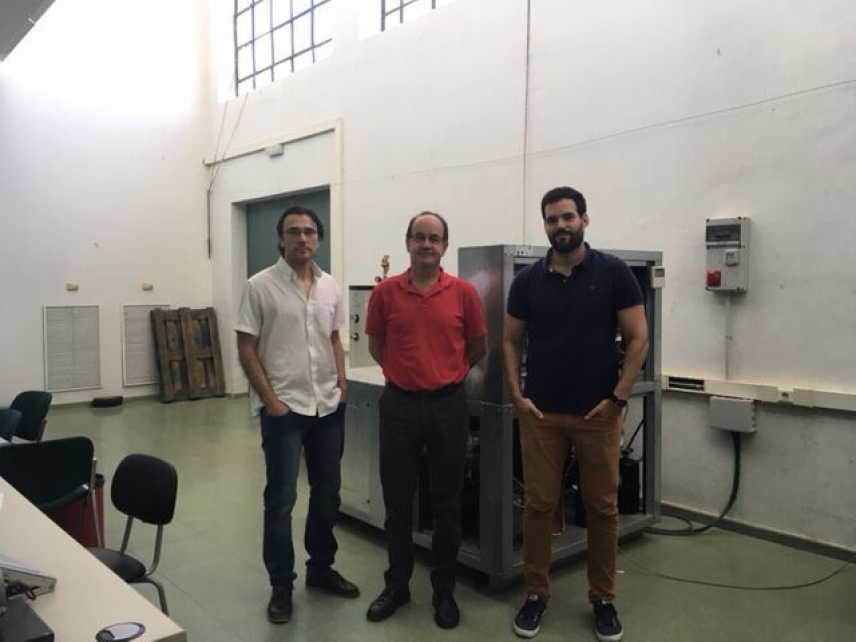A control-engineering research team at the University of Córdoba has developed a method which can be applied both to existing systems and in the design of new plants
Installing refrigeration systems in large areas such as department stores or buildings is no easy task. The design, construction and start-up of these systems is a time-consuming and costly process involving a large number of staff and high levels of energy consumption. A research group at the University of Córdoba has developed a method enabling refrigeration systems to function at maximum power with the lowest possible energy input. Using mathematical models, the team – led by UCO lecturer Francisco Vázquez, who holds a PhD in Physical Sciences – has devised a method for designing à la carte refrigeration systems, taking into account the atmospheric conditions and space constraints specific to any venue, thus obviating the need for purpose-built plants. Â
 Models were constructed by characterising major components in the refrigeration cycle, with a view to optimising energy efficiency. The models provided information on manipulable variables in conventional refrigeration systems, such as compressor frequency and ventilation speed during the condensation stage. These variables were then combined in mathematical models yielding multiple simulations, which were then used to estimate electrical energy consumption by any given refrigeration system. The combinations associated with the highest operating efficiency were then selected. Results obtained by modelling were tested in an experimental pilot plant simulating a high-power refrigerating system. As Francisco Vázquez explains, “Using mathematical models, we can generate 20 or 30 hypothetical refrigeration systems in just 10 minutes; efficient results can thus be obtained in record time and, most important, without having to test them in real plants or systems”.
Models were constructed by characterising major components in the refrigeration cycle, with a view to optimising energy efficiency. The models provided information on manipulable variables in conventional refrigeration systems, such as compressor frequency and ventilation speed during the condensation stage. These variables were then combined in mathematical models yielding multiple simulations, which were then used to estimate electrical energy consumption by any given refrigeration system. The combinations associated with the highest operating efficiency were then selected. Results obtained by modelling were tested in an experimental pilot plant simulating a high-power refrigerating system. As Francisco Vázquez explains, “Using mathematical models, we can generate 20 or 30 hypothetical refrigeration systems in just 10 minutes; efficient results can thus be obtained in record time and, most important, without having to test them in real plants or systems”.
The study, published recently in Applied Thermal Engineering highlights two major advantages of this method based on mathematical modelling:Â it enables different load models to be reproduced in a single plant, and also makes it possible to artificially simulate the desired atmospheric conditions.Â
The method developed by the UCO control-engineering research team can be adapted to a whole range of premises: it can be applied in industrial refrigeration – for example, in department stores, shopping centres, supermarkets and hospitals – but also in controlled-climate agricultural systems and refrigerated-transport systems.
This new formula is intended for use not only in designing refrigeration cycles for new plants, but also in optimizing energy consumption by existing plants with a view to cutting costs and reducing environmental impacts.
Ruz, ML; Garrido, J; Vazquez, F; Morilla, F. A hybrid modeling approach for steady-state optimal  operation  of  vapor  compression  refrigeration  cycles. APPLIED  THERMAL ENGINEERING.
Â



